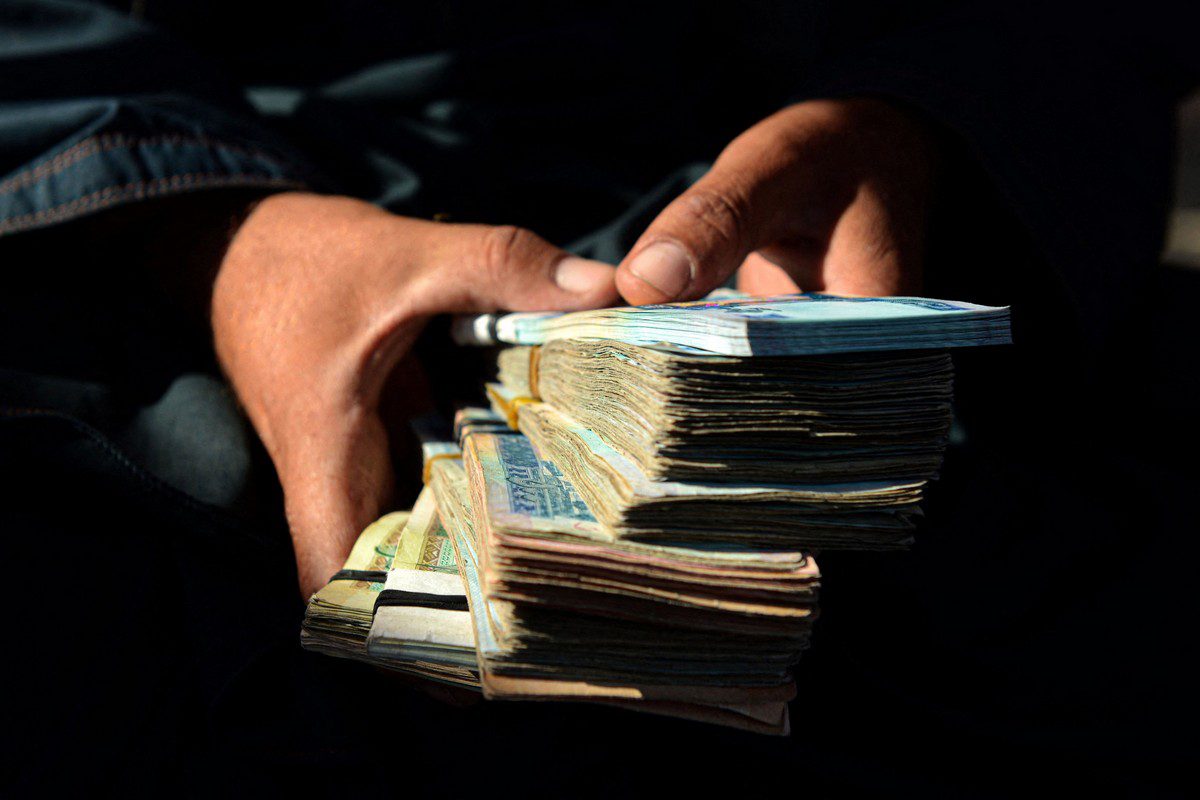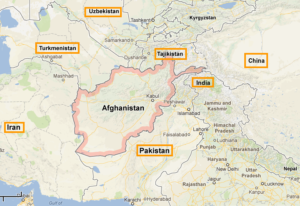The discussion surrounding the Taliban’s budget is often controversial. Since the Taliban took control of Afghanistan, no official documents detailing their budget—specifically regarding income and expenditures—have been released.
This article will examine the changes in the national budget over this six-year period and explore the reasons behind these fluctuations.
1-Budget Reforms and Management Changes
The Taliban’s takeover in August 2021 significantly disrupted Afghanistan’s fiscal landscape, particularly affecting the 2021 budget. Revenue collection resumed quickly after the takeover, leading the Taliban to implement a temporary three-month budget from December 21, 2021, to March 20, 2022, in order to align the fiscal year with the solar calendar.
Following the regime change, the Taliban reformed public finance management by dissolving parliament, which removed the legislative requirement for budget approval. As a result, the Taliban now unilaterally approves the national budget, subject to final validation by the Mullah Hebatullah in Kandahar.
2-National Budget
The Figure illustrating Afghanistan’s national budget from 2018 to 2023 shows a significant decline in funding after the government collapsed in 2021. In the years leading up to the collapse (2018-2021), the budget was relatively stable, peaking at 459.3 billion Afs in 2020. However, it fell sharply to 239 billion Afs in 2022, with a slight recovery to 274.4 billion Afs in 2023. This decline could be attributed to several factors, including political instability, which caused both local and international supporters to withdraw their assistance. In 2022 and 2023, the lack of grants for the Taliban group further contributed to the budget reduction, as international organizations ceased their assistance.
3-Operating and Development Budget
Due to the collapse of the government in 2021, many international donors withdrew their financial support. This withdrawal severely impacted development projects, which rely heavily on external funding. For instance, according to NSIA, while the development budget previously accounted for 30% to 40% of Afghanistan's total national budget before 2021, it dropped to just 13% in 2023. The Taliban regime's lack of recognition by numerous countries further diminished international aid, exacerbating budgetary strains. Additionally, the government's focus on establishing security and consolidating control over the country has resulted in increased operating costs, diverting attention and resources away from the construction and implementation of essential development projects.
However, according to Afghanistan Development update and Economic Monitor Report in 2024, total government spending in 1402/2023, a 10.7% increase from 1401/2022. This rise was primarily due to higher wages and an expanded workforce. Research noted a planned increase in the military from 150,000 personnel in 2022 to 170,000 in 2023, with further growth expected in 2024.
4-Domestic Revenue and External Financing
Up until 2021, both domestic revenue and external funds were relatively stable, peaking in 2021 when external financing played a crucial role in supporting the national budget. However, following the Taliban's takeover in August 2021, external funding plummeted to zero in 2022 and 2023.
Domestic revenue in Afghanistan was derived from four significant sources: taxes on international trade, taxes on goods and services, taxes on income, and non-tax revenue. Before 2021, the Taliban have relied on taxing trade to support their insurgency. During this period, they established their own checkpoints and created informal border crossings with the assistance of local communities, traders, and some neighboring countries to collect duties (Jackson; 2022). In addition, the Taliban generated revenue through various means, including foreign donations, which were estimated at around $107 million in 2008 from sources, particularly Gulf states. A significant portion of their income—up to 60%—came from the drug trade, with an estimated annual export value of $1.5 to $3 billion.
The Taliban also profited from illegal mining operations, reportedly receiving more than $10 million a year from 25 to 30 sites in southern Helmand province, according to a 2014 UN report. Furthermore, they taxed development and infrastructure projects, such as roads, schools, and clinics, primarily funded by Western countries, and made tens of millions of dollars annually by taxing truckers supplying international forces. Additionally, they earned over $2 million a year from billing electricity consumers through services provided by the Afghan government. Together, these diverse revenue streams significantly bolstered the Taliban's financial capacity.
4-1-Tax on Income, Services and Goods
According to the Afghanistan Development Update, In 2023, tax revenue reached 77.5 billion AFN, with customs duties totaling 50.3 billion AFN and non-tax revenue amounting to 65.9 billion AFN. This reflects a 9% increase in total revenues for the fiscal year 1402 (2023) compared to 1401 (2022). Their extensive experience in tax collection through traditional levies such as "Oshr" (a portion of farmers' harvests) and "Zakat" (religious tax), along with stricter compliance measures and an expanded tax base, contributes to this increase. However, the Taliban aims to enhance domestic revenue by improving compliance and enforcement, its reliance on higher imports and non-tax revenues to meet targets may jeopardize future revenue stability.
In FY 2023, the ITA achieved its revenue target of AFN 210 billion; however, this was insufficient to cover budgeted expenditures, resulting in cuts to essential services and development spending due to funding shortfalls. In addition, According to the Economist, it is estimated that the group generated between $27.5 million and $35 million annually from taxing the drug trade, along with approximately $245 million from checkpoints on major roads, where Taliban fighters extorted fees from truckers transporting food and fuel.
4-2-Tax on International Trade
According to Afghanistan Research Network, Despite reduced domestic demand and purchasing power due to adverse economic conditions, the increase in customs collections in Afghanistan can be attributed to several key factors:
Currency Depreciation:
The depreciation of the Afghani against the US dollar immediately after the Taliban takeover has led to higher customs tariffs. As tariffs are based on the dollar value of imports, a weaker Afghani results in increased customs revenue when converted to Afghanis (from 32 billion AFN in 2021, revenue increased to over 63 billion AFN in 2022). According to Afghanistan Development Update, in 2023, the value of the AFN increased to around 70 AFN per USD, resulting in a decrease in tax revenue from international trade to 50 billion AFN.
Abolishment of Informal Customs:
The Taliban eliminated informal customs collections that existed under the previous Afghan government. With all funds now flowing through government channels, formal trade taxation has increased. This change has saved traders money while allowing the regime to collect more in customs tariffs.
Reduction in Conflict and Corruption:
A decrease in conflict has positively impacted Taliban revenues. The current regime is perceived as less corrupt than the previous government, which faced significant security issues. Former customs officials had to pay off various local actors and officials, while trade was often redirected to avoid taxes, creating informal routes. The reduction in corruption and violence has closed these trade routes, allowing the Taliban to collect more revenue.
Increased Tariff Rates:
The Taliban has raised tariff rates on various goods, including essential items like potatoes, fish, and dairy products, as well as construction and agricultural machinery and some minerals. These tariff increases have likely contributed to the overall rise in customs revenues since the Taliban assumed control of the Afghan government.
4-3-Non-Tax Revenue
According to Afghanistan Research Network, The Taliban government in Afghanistan has significantly raised fees for non-tax revenues alongside increasing customs collections and tariffs. For example:
- Fees for business and construction licenses have risen dramatically, while costs for services like birth and death certificates and Electronic IDs have tripled,
- Freight vehicle fees have increased from AFN 10,000 to AFN 50,000,
- NGO license fees have jumped from $1,000 to $5,000,
- The Taliban is also enforcing aggressive tax collection on shopkeepers and plans to introduce new fees for various services such as armoured vehicles, gun licenses, bus stops, public transportation, and road tolls.
5- comparison of Republic and Emirate revenue and Spending (off and on budget)
The graph compares revenue and spending between the Republic of Afghanistan in 2019 and the Emirate of Afghanistan in 2022-23, highlighting both off-budget and on-budget financial activities. The absence of on-budget grants and borrowing options constrains the ITA's spending power, and foreign aid remains entirely off-budget due to the ITA's stance on human rights, gender, and inclusion.
6-Budget Deficit
Several factors could contribute to the rising budget deficit since 2019. Firstly, following the COVID-19 pandemic, the government increased its expenditures in an effort to stabilize the economy. Additionally, in 2021, the ongoing conflict against the Taliban led to rising spending. According to the Afghanistan Development Update, in 2023, the government expects the budget deficit to reach AFN 64.4 billion, driven by a nearly 30% increase in the ITA's Tashkeel in 2022 and the initiation of development projects without proper funding. This deficit reflects a troubling trend, escalating from AFN 6.1 billion in 2018. Line ministries have further compounded financial strain by hiring unremunerated staff, and the ITA has postponed pension payments for three years, which has led to accumulating arrears.
Conclusion:
The analysis of Afghanistan's national budget from 2018 to 2023 reveals significant shifts due to the Taliban's takeover and subsequent political instability. Following the collapse of the previous government, the budget experienced a sharp decline, exacerbated by the withdrawal of international aid and financial support.
Revenue generation has primarily shifted towards domestic sources, including increased taxation and non-tax revenue, although the lack of external financing remains a critical issue. The Taliban's unilateral control over the budget, coupled with rising expenditures related to security and governance, has led to a troubling budget deficit.


